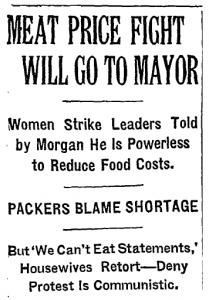 In a city as large and diverse as New York, the neighborhood becomes the locus of power. Clara Lemlich Shavelson understood this, and used it to her advantage. The density of neighborhoods, and the tendency for people to live near others with similar backgrounds can be worked to the organizer’s advantage. After she left union and suffrage organizing, Shavelson’s organizing was conducted in along two interconnected lines—location and identity. With her eye always on the end goals, Shavelson leveraged these two aspects of life in New York City to great effect.
In a city as large and diverse as New York, the neighborhood becomes the locus of power. Clara Lemlich Shavelson understood this, and used it to her advantage. The density of neighborhoods, and the tendency for people to live near others with similar backgrounds can be worked to the organizer’s advantage. After she left union and suffrage organizing, Shavelson’s organizing was conducted in along two interconnected lines—location and identity. With her eye always on the end goals, Shavelson leveraged these two aspects of life in New York City to great effect.A master’s capstone project submitted to the Graduate Faculty in Liberal Studies in partial fulfillment of the requirements for the degree of Master of Arts, The City University of New York.

This work is licensed under a Creative Commons Attribution-NonCommercial-ShareAlike 4.0 International License.
Email us at [email protected]